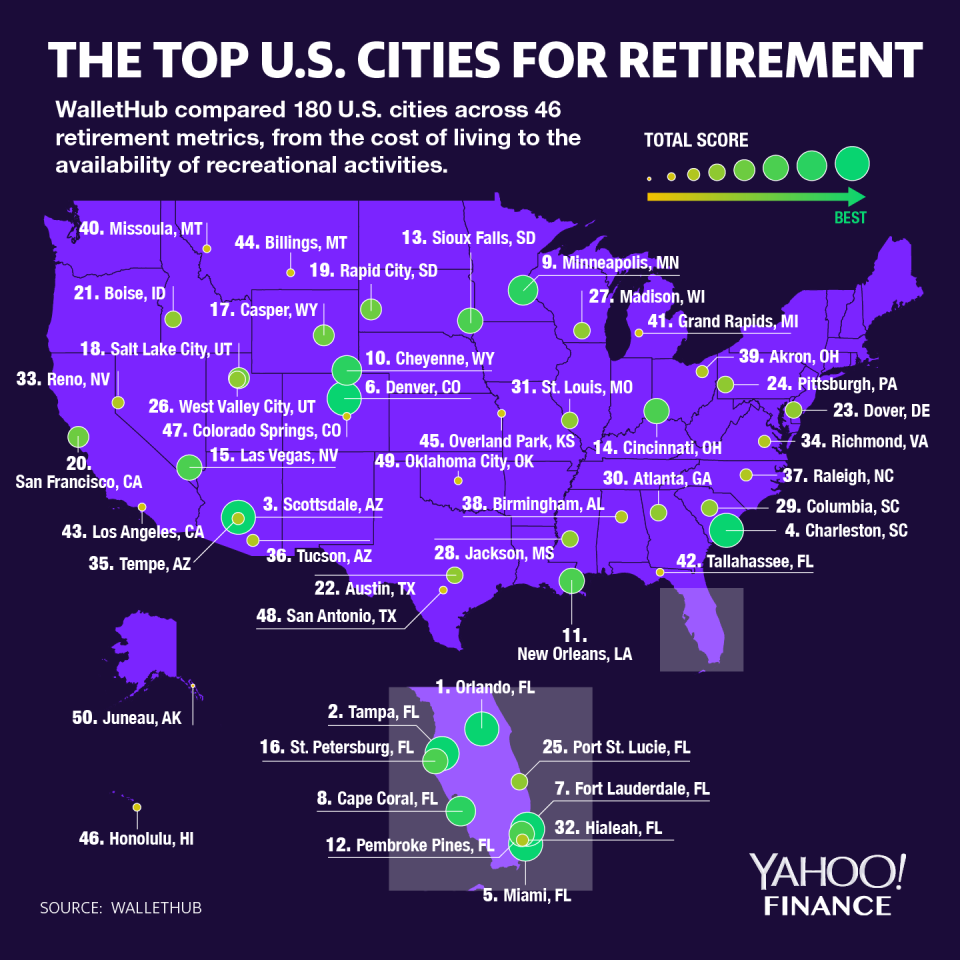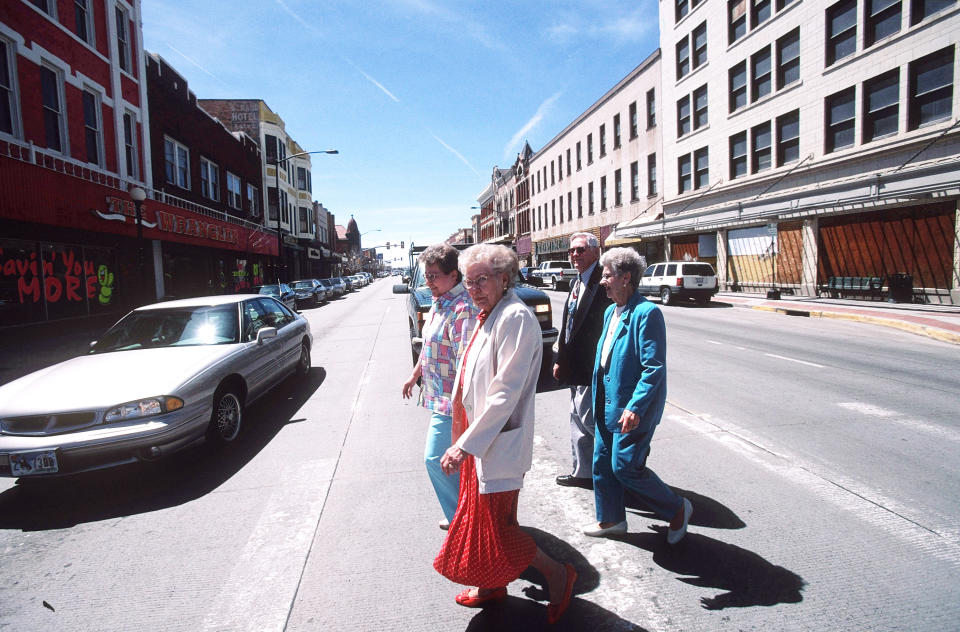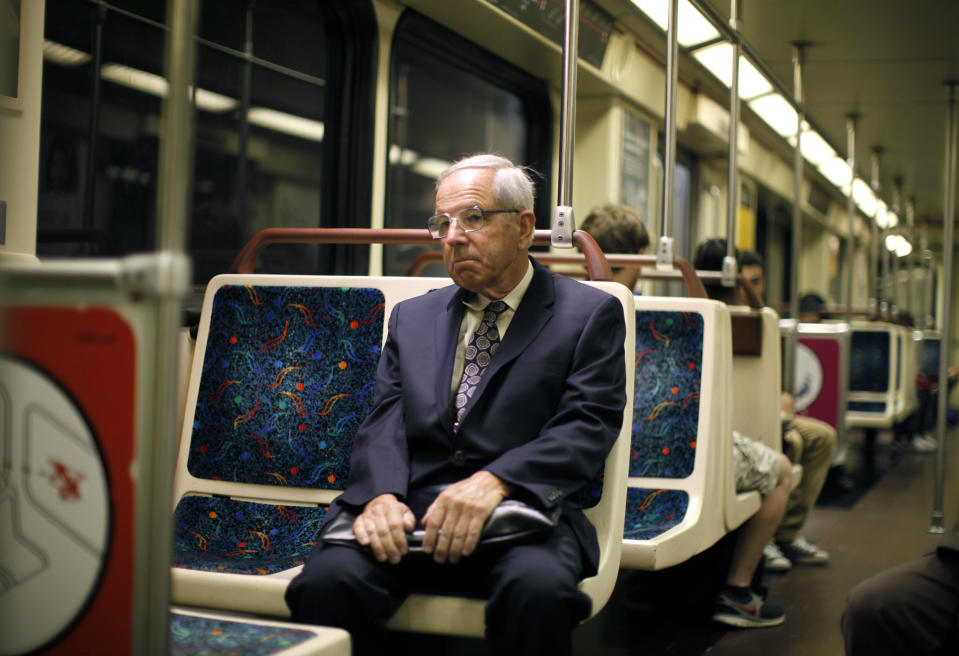The best and worst U.S. cities to retire
The Sunshine State strikes again.
When it comes to retirement, the top city for retirees is Orlando, Florida, according to a new study by WalletHub.
The study — which looked at 182 cities and evaluated them based on affordability, activities, quality of life, and healthcare — found that Orlando was the best pick for retirees, followed by Tampa, Florida and Scottsdale, Arizona.
Orlando scored high marks for affordability — the state imposes no personal income tax, for one — and a wide range of activities for residents.

A few unexpected cities also made the list, WalletHub analyst Jill Gonzalez told Yahoo Finance.
"It was a little surprising to see Denver and Cheyenne ranking so highly among mostly Florida cities,” she explained. “In Denver's case, the large variety of activities and healthcare quality were the main reasons for the city making it to the top. Cheyenne is among the best retirement cities due to its affordability, as well as healthcare quality.”
Worst cities for retirement
Retirees may be surprised to find that the worst cities for retirees was Stockton, California, followed by Bridgeport, Connecticut and Warwick, Rhode Island. These cities ranked low on all of the metrics.

“California cities really fell this year,” Gonzalez said. In particular, “Fresno and Bakersfield ranked particularly low in terms of activities and healthcare.”
High costs of living, expensive in-home services, lack of physicians, the poor quality of thee public health system, and the lack of activity options altogether made these cities “less-than-friendly elderly labor markets,” she added.
Aging America demands infrastructure changes
Across generations, the needs of older Americans haven’t changed much, American Association of Retired Persons (AARP) Vice President, Livable Communities and Long Term Services and Supports Rodney Harrell told Yahoo Finance. But the overall infrastructure — or environment — demands attention, he added.
The biggest costs retired people face has been “relatively consistent,” Harrell explained. “Housing and transportation are now and have been highest costs for most people, for at least several decades.”

Meanwhile, the environment of the communities they live in has also largely stayed the same, which has imposed one particular difficulty.
“The way that we made communities, especially since World War II, has meant, for example, that most of those new communities built since that time are built with a car at the dominant form of transportation,” said Harrell. “And if you can't afford a car, or you can no longer see well enough to drive or anything might happen, and you're in one of those communities, you may very well be stuck.”
He added that “we hear often from people that moved to a community when they were younger, and it seemed great, had lots of great features. But now that same community is isolating, and they feel stuck and alone, because they don't have the ability to get around that they once did.”
—
Aarthi is a writer for Yahoo Finance. Follow her on Twitter @aarthiswami.
Read more:
Uber, Lyft: Gig economy employees are facing a heightened retirement crisis
The plan to put your employer on the hook for your retirement
Read the latest financial and business news from Yahoo Finance
Follow Yahoo Finance on Twitter, Facebook, Instagram, Flipboard, SmartNews, LinkedIn,YouTube, and reddit.

 money
money 
